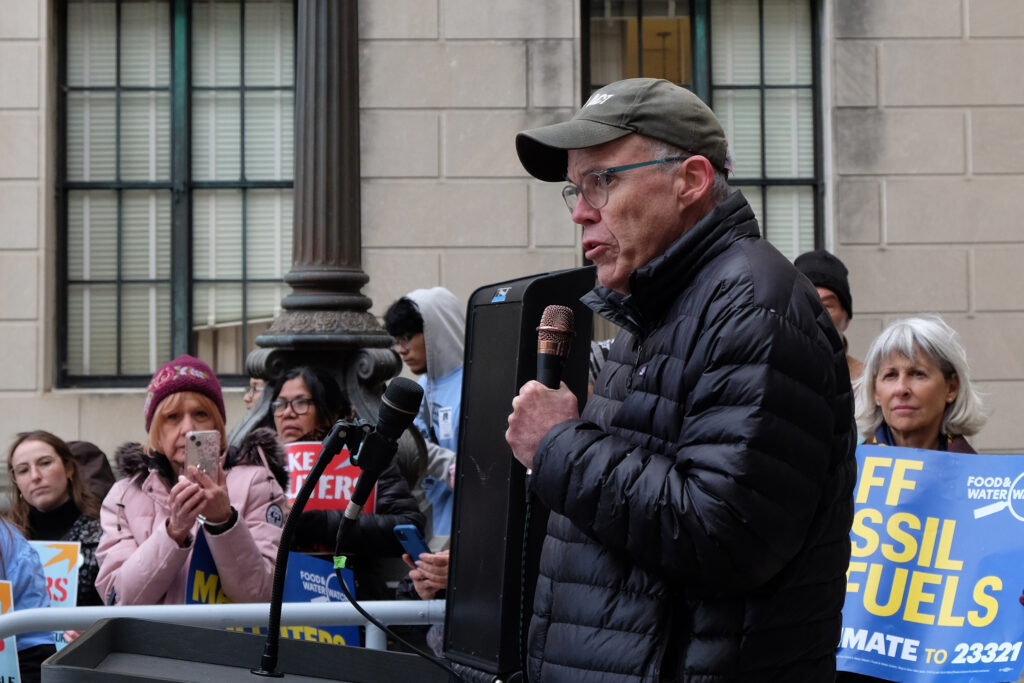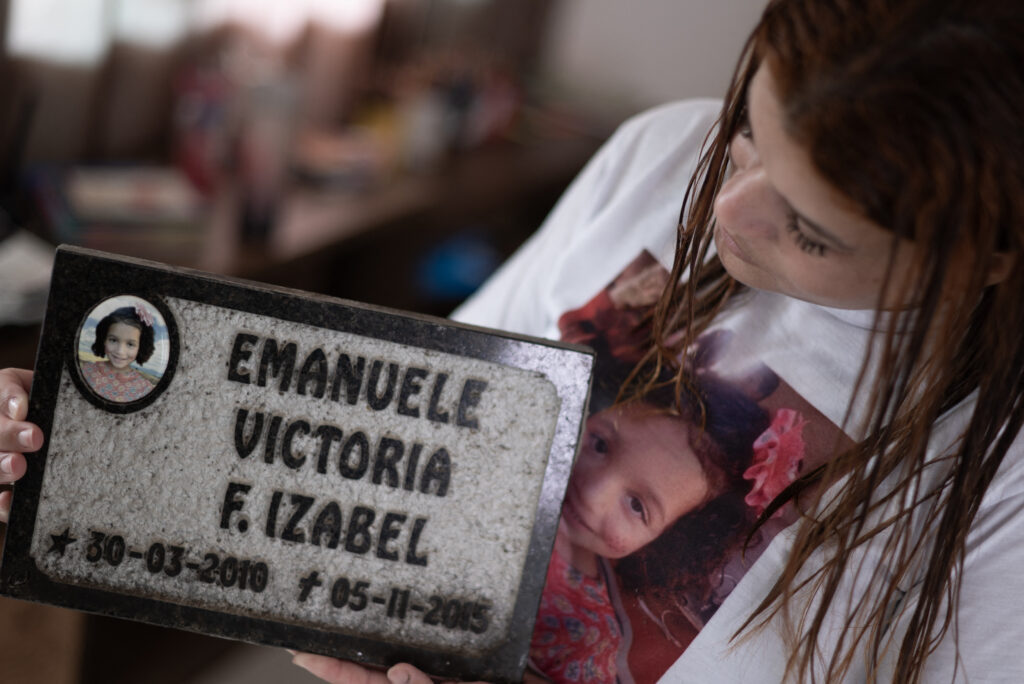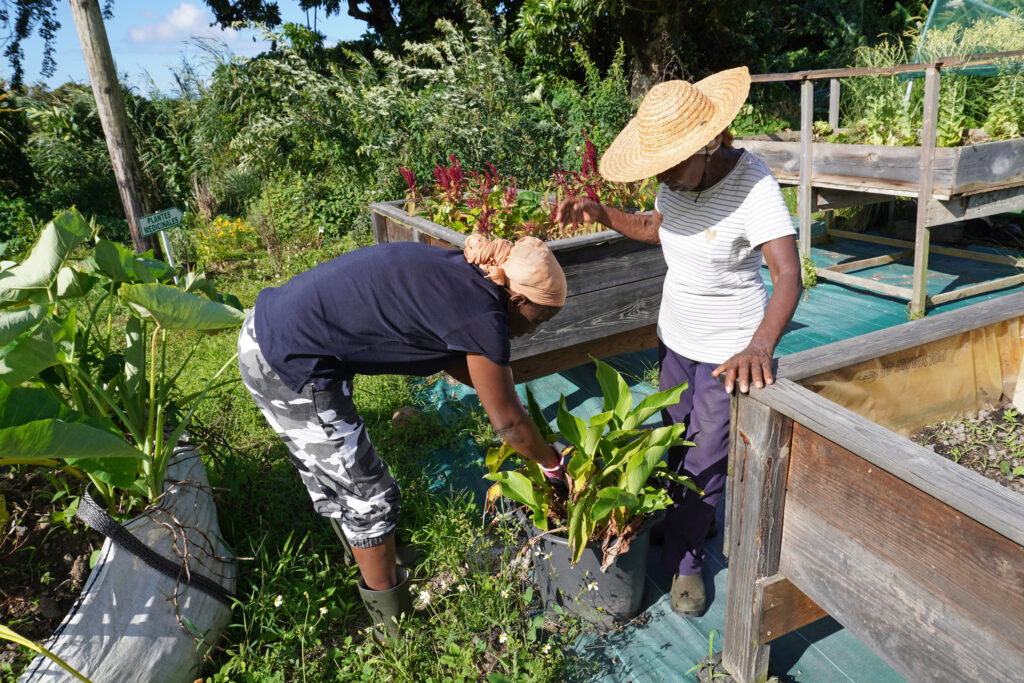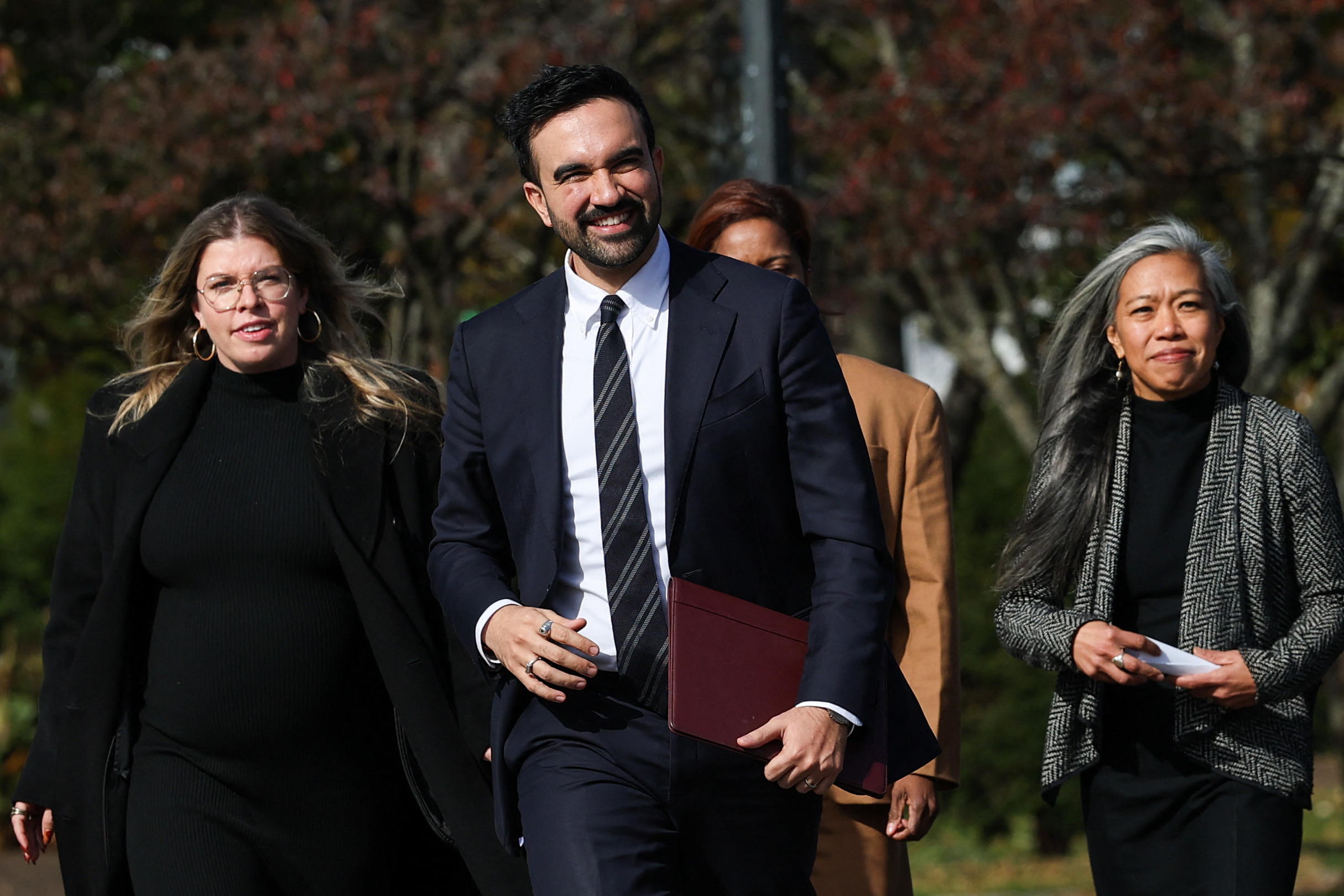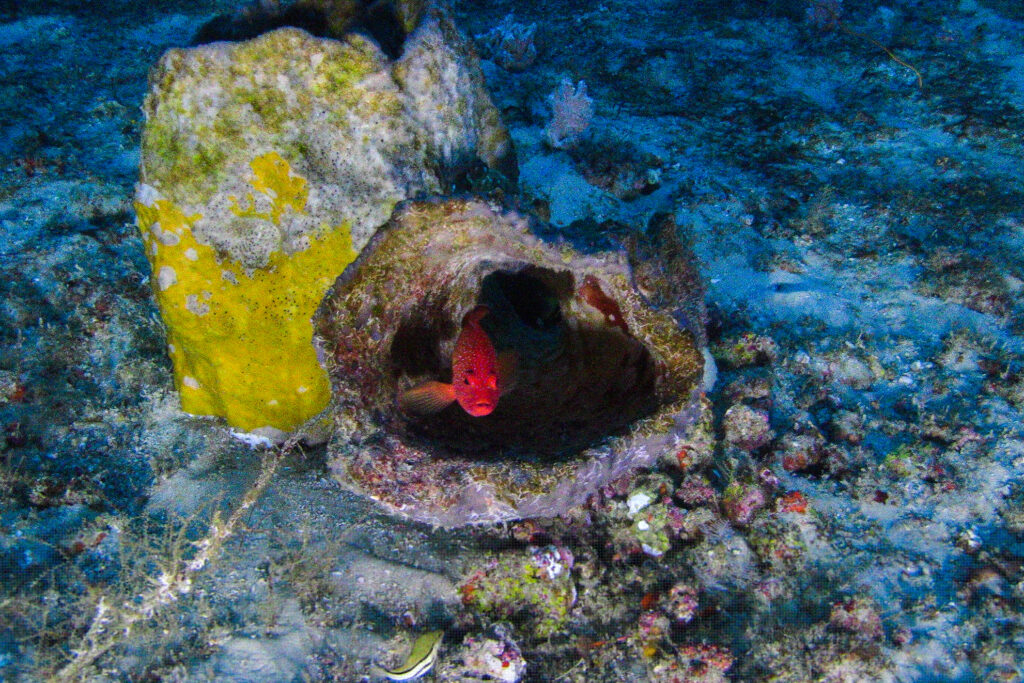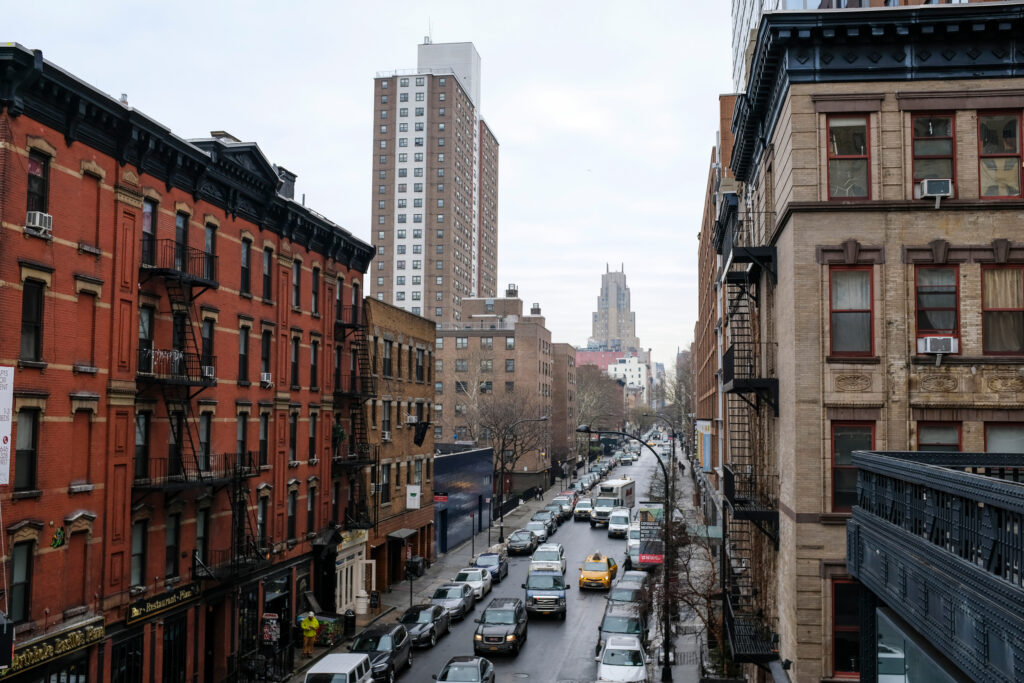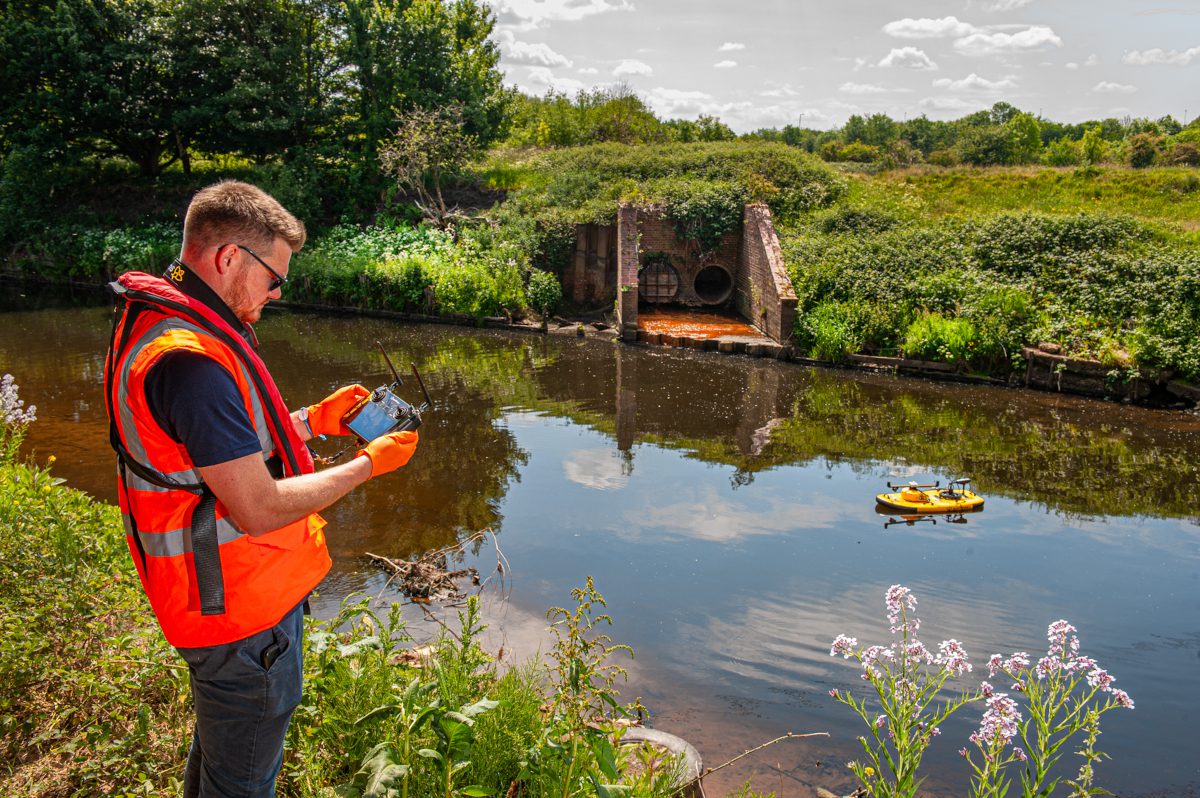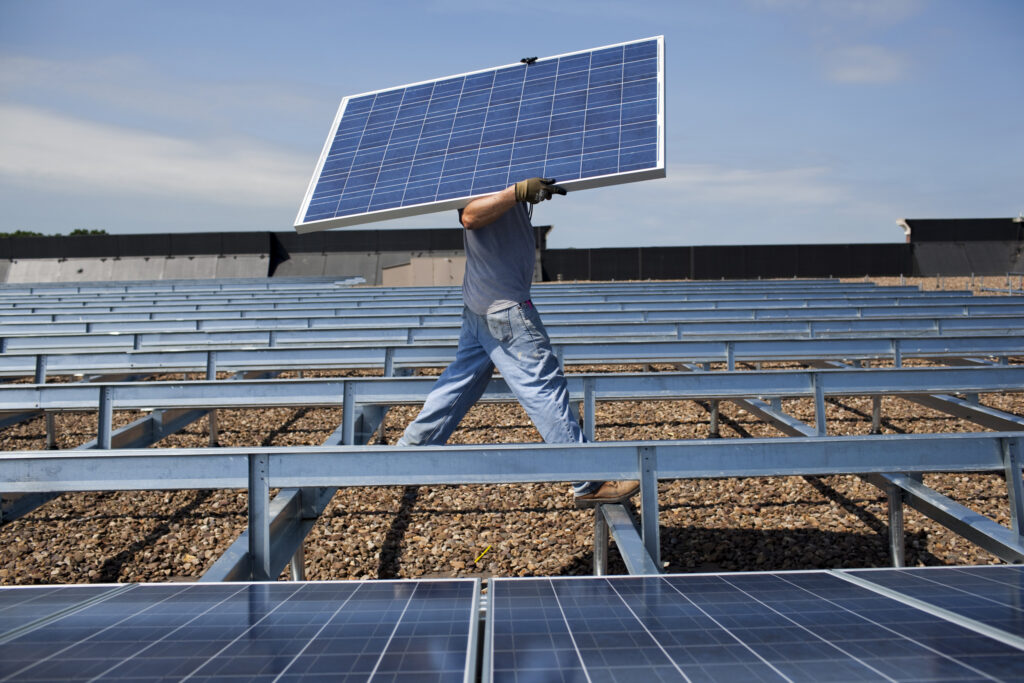From our collaborating partner “Living on Earth,” public radio’s environmental news magazine, an interview by host Steve Curwood with Laurene Allen, a Goldman Environmental Prize winner.
Laurene Allen moved to Merrimack, New Hampshire, to raise a family in the 1980s.
Little did she know that, in 2016, the state Department of Environmental Services would reveal that the town’s water supply was contaminated with high levels of PFAS, or forever chemicals, leaked by the nearby Saint-Gobain Performance Plastics plant.
A social worker by training, Allen became a self-taught expert in PFAS compounds and led a grassroots campaign to expose widespread health harms in her community linked to those chemicals. In 2022, the company agreed to provide drinking water to roughly 1,000 properties in the area, several years after entering into a consent decree with the state. Last year, the plant closed.
Allen won the 2025 Goldman Environmental Prize for North America for her activism. This interview has been edited for length and clarity.
We’re hiring!
Please take a look at the new openings in our newsroom.
See jobs
STEVE CURWOOD: Tell me about the moment when you learned that the water in your hometown of Merrimack, New Hampshire, was contaminated with PFAS chemicals coming from the Saint-Gobain plastics plant. How did you feel when you learned that these chemicals were in your community?
LAURENE ALLEN: I’m a clinical social worker, and in my work, I’m kind of out of the equation. So my first reaction was the responses to people who were coming forward in an information meeting and sharing their private business, basically.
And New Hampshire folks don’t do this. They’re self-revealing and self-disclosing patterns in health, and they’re ending over and over and over by saying, “Do you think it could be the water?” Now, there isn’t a state or public health official anywhere that will say, “Yes, we think it could be the water.” But I’m listening to people, and I’m watching them walk away, and I’m really feeling for them. They’re depleted, they’re hurting, and I’m seeing a pattern emerge.
So before I thought about patterns around me and my neighborhood and my health and my concerns, I was thinking about the community as a whole. My brain went really big, really fast, and I said, “Something isn’t right here.”

CURWOOD: Who called this meeting, and what was going on there?
ALLEN: The state of New Hampshire, and I saw little bits about the investigation that was really contained. And I think that’s how it goes in investigations like this: They look as little as possible, and there was a lot of denial. There was this major effort to keep exposure and outcome really far apart.
I kept hearing the phrase, “These are emerging contaminants. We’ve just discovered them. We really don’t know much about them.” Since then [I learned] that there’s an awful lot known about these chemicals. Turns out that they are highly toxic, highly hazardous substances that somehow evaded hazardous substance and toxicity labels for decades.
That’s infuriating. That’s not OK. … And all these people who came up to the microphone, nobody validated them.
CURWOOD: You trained as a social worker. I don’t imagine you have a whole lot of background in chemistry or environmental studies, or at least before this, but now you are, in fact, one of the nation’s experts on PFAS contamination. How did you go about teaching yourself about these chemicals, and what motivated you to keep going?
ALLEN: I realized quickly that people in an impacted community such as this are speaking from emotion. They’re speaking their truth, they’re telling their stories and they are very emotional and they’re very hurt.
And that isn’t enough to sway the system, is what I quickly realized.
And I said, “Hmm, we need to become our own experts. We need to learn how to talk at a high level, so people realize we know what we’re talking about, so we can refute the pat on the back, ‘It’s safe. Your exposure is, quote, relatively low. You’re not like this other community.’”
We were told these things. The minimization, the denial, it was not acceptable. So we became our own experts.
I used an iPad at night, you know. I was never one to take electronics to bed with me. And I’d have something in my mind after work, and about 9:30 I’d get to it, and I’d start researching and reading investigation documents and reading health studies and reading things from other countries, avidly consuming.
I’d look at the clock and I’d say, “You really need to go to bed,” because in my profession, you need to take care of yourself. You’re there for clients the next morning. And, you know, just saying, “Well, I’ll just read one more study.” At that point, I thought, what is going on here? It’s compulsive behavior. Looking back, I realized at one point, it’s a trauma response, you know, it really, really is.
“The minimization, the denial, it was not acceptable. So we became our own experts.”
CURWOOD: From your studies, what did you learn about the health risks associated with PFAS, or these so-called forever chemicals? What makes them so concerning? To what extent have you seen them in your community there, in and around Merrimack, New Hampshire?
ALLEN: In doing my research, I found out that PFAS are part of the endocrine disruptor category of chemicals, aside from being carcinogens and toxic. Our endocrine system is everything, right? It keeps us healthy. It keeps us in balance. If that’s out of whack, we’re in trouble.
You can find graphics online now that have been created showing the human body, in males and females both, and you’ll go through every system of the body: the nervous system, the cardiovascular system, reproductive health is highly disrupted, neurodevelopmental changes, autoimmune disruptions, you know, cholesterol impacts, lipids, liver enzymes and kidney impacts.
This is a chemical that does not break down, and your body excretes all kinds of things every day. Your body doesn’t know what to do with this to break it down, to excrete it. So your elimination organs are very, very impacted, on and on and on it goes.
The research was kind of mind-blowing at that point, because I was finding study after study showing harm, and I was being told by the folks that are there to guide us that there’s no evidence, there’s no research and there’s no science. If I can find information on a Google search on a cell phone, and people whose jobs it is that we turn to are saying, “We just don’t know and we don’t have any science” … that was a real disconnect there.
This story is funded by readers like you.
Our nonprofit newsroom provides award-winning climate coverage free of charge and advertising. We rely on donations from readers like you to keep going. Please donate now to support our work.
Donate Now
CURWOOD: What if any health effects for you or your family or friends did you become aware of after this?
ALLEN: What I saw [at] that meeting initially was a lot of people with kidney cancer, bladder cancer, breast cancer, which took a number of years to have acknowledged as PFAS-related. And I heard about thyroids: … Thyroids that had cancerous nodules, thyroids that had been removed in 14-year-olds. So that was just the beginning of it.
And in 2017 when everybody was telling us, you know, “Nothing to see here, folks,” basically, I decided that we were going to try to collect our health data and bring it to the state.
So I went door-to-door. I found people who were vocal, who I never knew before this journey, and I kind of messaged them all on Facebook Messenger, of all places. And I said, “Hey, where do you live? Could I come by and bring you some flyers? And would you be willing to give these out with a link to your neighbors?”
No one wants to go door-to-door in my community, you know, it’s very intimidating. And bit by bit, there were people who gradually became part of my citizens’ group. And we distributed all over town. We put it in a library, in the town hall and in the paper so everybody could come in there and report health issues.
We took it to the state and, of course, we were told, “This isn’t very scientific.” It was as scientifically done in terms of methodology and sampling as a person could do with no budget. But it was really dismissed.
At that point we asked them to do a cancer incident report. They did. It was inadequate, and we finally, after two years, got a commitment to redo it. Recently, we have partnered with Dartmouth [College] to analyze this properly.
CURWOOD: Taking on the powerful plastics industry is no easy feat these days. So what did you do to fight back against the Saint-Gobain plastics plant and rally your community to take on this issue of PFAS?
ALLEN: It was very clear that what their strategy was is to keep the focus on the past, to say, “Oh, we really didn’t know these problems were there, and we followed the law,” and they were omitting what they had transitioned to.
When you phase out PFOA and PFOS, which industry did to some extent by 2015, you change your practices, and you think you can sail off into the sunset, and we’re, quote, safe. In fact, you’re spewing from 13 unfiltered stacks all of the replacement chemicals for PFOA, which are horrific.
So every meeting, over and over and over, I stood up and made sure when they talked about PFOA and PFOS, I would rattle off nine to 12 other ones, and said they are all present. Count them all. You cannot talk about the past only.


CURWOOD: To what extent did they cast aspersions on your mission, though? I mean, usually people trying to conduct reform get labeled as crazy or out there, or left or right or whatever. What happened to you?
ALLEN: Oh, I was called a fear monger and a crazy lady in the beginning of this. And someone waved his finger in my face, who was in an elected position, publicly on camera—the video still exists, I’m sure—and looked at me over his glasses and said, “Do not use the word, ‘contamination.’ It’s inflammatory language.”
And I smoothly said, at that moment, “I do not care for that word myself. But like it or not, we are an EPA-designated contamination investigation, the biggest investigation in all of New England.” I said, “I love it here. I moved here for the same reasons as you did. This is horrific. That is not my word.”
The very next day, the website changed, and they took out the EPA [contamination] investigation language, and it said, “investigation into the presence of perfluoroalkyl substances,” and sanitized it.
Another thing I would do is when I saw someone in our town council, or someone that I felt needed better ammunition than they were getting from industry lobbyists, because that’s where they were getting information, is having a coffee with them and bringing them documents that I highlighted. And they said, “Where are you getting this? We get weekly updates. We don’t know any of this.” And I’d say, “This is the investigative documents that’s stored on the state’s website. It’s very difficult to delve into it, but I’m giving them to you in a pack and highlighting things that are not OK,” even with people who were really terrible to me.
When you meet a person and they’re really distasteful and they feel harmful to you, you just nod and walk away, and I’m thinking, they don’t know, and they need to know, because they’re a person, too, and they’ve been drinking the water. They need to know this. So my compassion, I think, really overrode what was coming at me, and I wasn’t personalizing it.
CURWOOD: What were the results of your years-long campaign against the PFAS contamination there in Merrimack, New Hampshire? I mean, today, to what extent has the community been protected?
ALLEN: Well, we haven’t been protected, but we’ve made gains. Basically, we took this really fiscally frugal state, and we convinced the residents that there was enough of a problem that 93 percent of taxpayers voted to remediate all of our public wells at our own cost, with the hopes that we would get justice and be reimbursed for that at some point. That is unheard of, 93 percent vote, and that is how well-educated people have been and how they concluded that the water was not safe.
We’ve established a grant program for all of New Hampshire, just not Merrimack, under some Biden infrastructure dollars that were specifically earmarked to PFAS, first in the nation: All private well owners whose well tests above 12 parts per trillion of PFOA, which is now four parts, will receive a $5,000 grant to filter, properly filter, their wells. So that was huge. We have successfully got air permitting when it comes to PFOA in rule making. So Saint-Gobain needed to filter their air stacks. You know, what we have accomplished is more in the regulatory [sphere], which is huge for New Hampshire.
CURWOOD: And what’s happened to the company, Saint-Gobain?
ALLEN: Saint-Gobain, shortly after being approved for their air permit for the next five years, really surprised people when they announced that they were going to reorganize and close this facility. I know that they realized that we weren’t ever going to stop, we aren’t ever going to go away. They had been banking on hiding in New Hampshire and no eyes upon them.
CURWOOD: So Saint-Gobain has gone away; they left Merrimack. But what’s left behind? Usually, these kind of chemical manufacturers leave a fair amount of residue. What’s been done to take away any further toxic danger?
ALLEN: A highly, highly contaminated site that just recently was acknowledged by the state of New Hampshire as having an inadequate remediation plan—that took two years for them to say those words. We haven’t succeeded in really protecting the environment because the site cleanup plan that’s being proposed is a joke. It does nothing. The soil, the groundwater, the river, the fish, the livestock, that’s never been looked at. So they’ll leave behind a forever impact on the community, right? The forever chemical that never goes away.
CURWOOD: What gives you hope?
ALLEN: What gives me hope is the people. You know, the people who are so remarkable that they’ve stepped up and they’ve stood shoulder to shoulder, and we have propped each other up. And it’s real easy to be fearful and to hide and say, “I can’t deal with this,” but people give me hope. I believe people, regular people, can do amazing things when they work smart and they work together.
About This Story
Perhaps you noticed: This story, like all the news we publish, is free to read. That’s because Inside Climate News is a 501c3 nonprofit organization. We do not charge a subscription fee, lock our news behind a paywall, or clutter our website with ads. We make our news on climate and the environment freely available to you and anyone who wants it.
That’s not all. We also share our news for free with scores of other media organizations around the country. Many of them can’t afford to do environmental journalism of their own. We’ve built bureaus from coast to coast to report local stories, collaborate with local newsrooms and co-publish articles so that this vital work is shared as widely as possible.
Two of us launched ICN in 2007. Six years later we earned a Pulitzer Prize for National Reporting, and now we run the oldest and largest dedicated climate newsroom in the nation. We tell the story in all its complexity. We hold polluters accountable. We expose environmental injustice. We debunk misinformation. We scrutinize solutions and inspire action.
Donations from readers like you fund every aspect of what we do. If you don’t already, will you support our ongoing work, our reporting on the biggest crisis facing our planet, and help us reach even more readers in more places?
Please take a moment to make a tax-deductible donation. Every one of them makes a difference.
Thank you,




